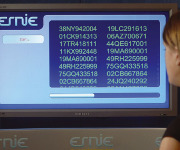MOT test: pass and fail rules, diesel vehicle changes and new checks explained

The new MOT test arrives this weekend with new ways to fail. But surveys show most drivers are confused by the impending rule changes. Here's all you need to know.
Motorists risk being caught out by changes to the MOT test, the RAC has warned.
From Sunday 20 May, vehicles undergoing the test will undergo a tougher assessment, yet more than half of the 1,866 motorists surveyed by the RAC said they were confused by the changes.
Rather than getting a simple pass or fail, vehicles will now receive one of five grades: Pass, Advisory, Minor, Major and Dangerous.
Here we explain what these grades mean, along with the other key changes to the MOT test, who will be affected, and how you can minimise costs when it comes to maintenance and repairs.
But before you organise an MOT test, have a read our guide to finding a cheaper and better garage.
Defects categorised differently
Misunderstanding the new MOT classifications could end up with you walking home.
Whereas at present you either pass or fail, there will now be five separate categories.
Your vehicle will receive a Pass if it meets the minimum legal standard. If you have small faults you will also pass with an Advisory, meaning you should ‘monitor and repair [the fault] if necessary’.
If you receive a Minor you will pass but you will be expected to repair the fault as soon as possible.
According to Kwik-Fit, one example would be brake lights – if less than half of your brake lights aren’t working you’d receive a minor.

If more than half of your brake lights aren’t working you’d receive a Major, meaning the vehicle would fail the MOT.
If you still have a valid MOT certificate from last year you’d still be able to drive but would have to repair the vehicle immediately.
A Dangerous fault – and certain fail – would be if all of your brake lights were broken. In that case, you won’t be allowed to drive the vehicle until it’s repaired.
Worryingly, 11% of motorists surveyed by the RAC believed that vehicles with ‘Sangerous’ and ‘Major’ faults would pass the test, when in fact they would not.
Stricter rules on diesel vehicles
If you drive a diesel vehicle, it will likely be equipped with a diesel particulate filter (DPF).
Under the new rules, if the DPF has been tampered with, or smoke comes out of the exhaust, the vehicle will receive a Major fault and fail the MOT.
A new DPF could cost between £1,000 and £3,500, according to the RAC, potentially costing more than the vehicle itself.
Many vehicles with a DPF will display a dashboard warning light if they detect a problem:

If you’re concerned about your DPF and have an MOT coming up, you can get your DPF cleaned.
A DPF deep clean at Halfords, for example, costs £85 and is particularly suitable for drivers who make a lot of short, low-speed trips.
Cut the cost of petrol or diesel with our money-saving guide.
Brakes, lights and washers
The new MOT includes a number of smaller checks.
These include whether tyres are underinflated; whether the brake fluid has been contaminated and if brake fluid leaks are posing an environmental risk.
Brake pad warning lights and missing brake pads or discs will also be looked for.
If your vehicle was first used from 1 September 2009 it will endure two extra checks on reversing lights and headlight washers (if you have them).
Vehicles used after 1 March 2018 will have their running lights tested, but these vehicles will not have to undergo an MOT until they’re three years old.
If you’re planning to buy a new car, then look at our guide to the cheapest cars over six years – including insurance, fuel and the MOT.
The MOT certificate will change
In a bid to make it simpler, the MOT certificate has been redesigned, with the advisory notes highlighted. The new certificate is on the right:

Golden oldies
If your vehicle has passed its 40th birthday, then it’ll receive a very special present.
Cars, vans, motorcycles and light passenger vehicles that haven’t been substantially modified won’t need an MOT if they’re passed this age milestone.
Previously, vehicles had to be built before 1960, so the new rules will save a number of drivers from having to get an MOT.
If you’re unsure you can check the date it was registered online.
Fees WON’T go up
No news here, but it’s important you don’t get ripped off for your MOT.
Look out for the three blue triangles logo displayed outside the garage so you know it’s an authorised MOT test station.
The maximum fee for the test must also be displayed inside the station – that’s £54.85 for cars and caravans and up to £37.80 for motorbikes.
Why rejecting auto-renewal on your car insurance could save you thousands of pounds
Most Recent
Comments
-
Never afraid to failed! Surely "Missing brake pads or discs" would always have been a fail?
REPORT This comment has been reported. -
always worry to be failed but it can also gain your expirence. thanks for sharing
REPORT This comment has been reported. -
Many people ignore signs of wear that can decrease the car's performance. It doesn't necessarily mean catastrophic failure, but worn pads, discs, lead to increased breaking distance, and defunct light mean signalling to other motorist. Thank goodness for MOTs.
REPORT This comment has been reported.
Do you want to comment on this article? You need to be signed in for this feature









24 March 2021